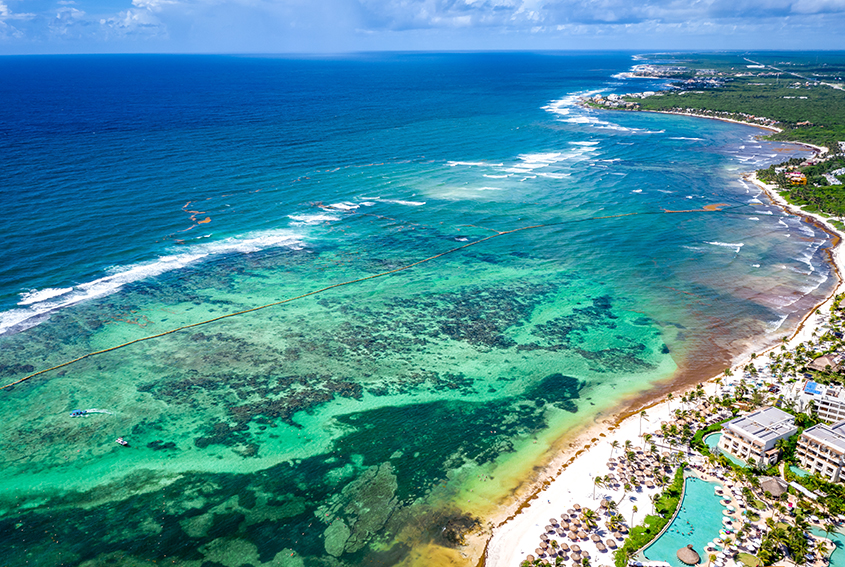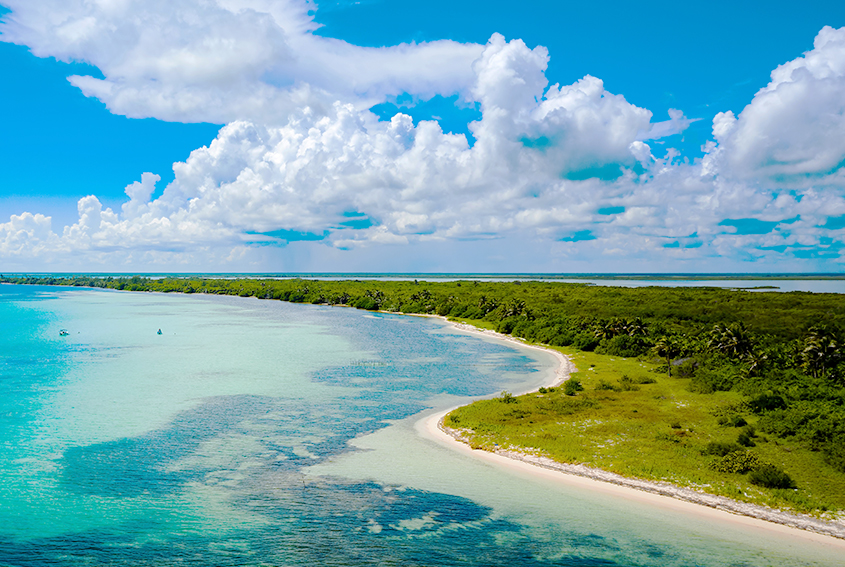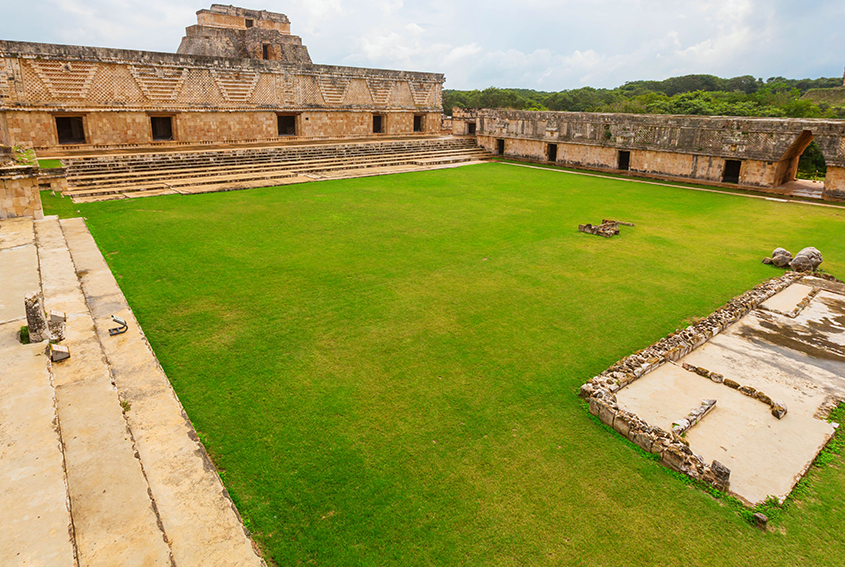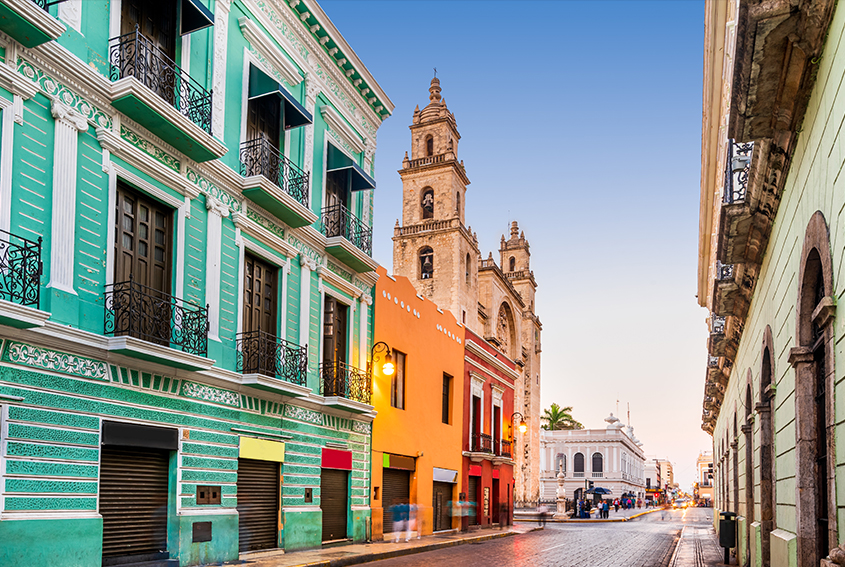Exploring the Mexican Caribbean and Yucatan this summer
When you stay at Grand Residences, you really are on the threshold of a world full of wonders. Underwater marvels, nature, history and traditions, there is so much to discover beyond the beautiful beaches of the Riviera Maya. Go exploring on your next visit, here are some ideas.
Dive right in
You’ll want to spend a morning snorkeling or diving in the Puerto Morelos National Marine Park and Petempich Bay and exploring colorful coral gardens full of marine life. Don’t stop there, Akumal has offshore reefs that are the favorite haunt of sea turtles, and you can even see them swim past you in the bay. Or take the ferry from Playa del Carmen to Cozumel and discover the island’s extraordinary chain of coral reefs, some of the most spectacular in the world.
Cozumel has reefs suitable for snorkeling and for scuba novices and more challenging deep waters sites for advanced open water divers. See towering coral buttresses, immense red, orange and yellow sponges and spot some of the 300 species of colorful fish and other marine life that dwell in island waters.
Sian Ka’an: where the sky begins
In Maya, the name Sian Ka’an means “where the sky begins,” and it does justice to the endless landscape of jungle, wetlands and lagoons that stretches towards the horizon and the distant glimmer of the Caribbean. A day trip to this immense biosphere reserve and UNESCO World Heritage Site will take you into the heart of a wild wonderland.
Protected by government decree since 1986, Sian Ka’an is home to 103 different mammals including the jaguar, tapir, howler and spider monkeys, and the shy West Indian manatee. It has one of Mexico’s largest crocodile populations, is an important nesting area for sea turtles and 330 species of resident and migratory birds live in the jungle and wetlands.
Many Sian Ka’an trips begin in Muyil, an archaeological site in the jungle that is a short walk from a lagoon where visitors board an outboard motor for an exciting boat trip through the wetlands to Boca Paila on the shores of the Caribbean.
The boat enters a channel through the mangroves that was widened and dredged by the ancient Maya and used as a trade route between the Caribbean and inland cities. Once you have seen the small temple that guards the waterway it is time for a swim. The water is clear and shallow, and you literally drift along with the gentle current, sheer bliss.
Herons, roseate spoonbills, wood storks and kingfishers are just some of the birds you’ll spot during your journey through the Sian Ka’an wetlands.
Exploring a Maya masterpiece
You may have visited the ancient Maya cities of Tulum, Coba and Chichen Itza and marveled at their majesty, but have you ever been to Uxmal? Located an hour’s drive to the south of Merida in the neighboring state of Yucatan, it is one of the Maya World’s treasures, a masterpiece of architecture and art.
During the Late Classic period of Maya history (AD 600-900), Uxmal was a powerful regional capital with a chain of smaller cities including Kabah, Sayil, Xlapak and Labna in its thrall. Today, they are known as the Puuc Route.
Apart from location, these archaeological sites share a unique architectural and artistic style called Puuc. In recognition of their outstanding beauty and exquisite stone carvings, UNESCO declared them a World Heritage area in 1996.
Most Puuc-style buildings are long and low and feature columns, arches and courtyards. The bottom half of the walls are smooth and give way to elaborate carved friezes featuring masks depicting Chaac, the rain god. Water was scarce in the area and Chaac was especially revered. At Uxmal and other nearby sites, the Maya built chultunes or reservoirs to store precious summer rainfall.
The Pyramid of the Magician dominates the Uxmal skyline. Behind it lie the Temple of the Birds and the Nuns Quadrangle, a courtyard surrounded by four palaces. An archway leads to the Ball Court and towards the magnificent Palace of the Governor, the House of the Turtles, the Great Pyramid and El Palomar.
Magical Merida
A visit to the grand old city of Merida, capital of the Yucatan is a must year-round. Spend your days exploring 16th-century churches and 19th-century mansions, visiting museums and galleries and shopping for arts and crafts. There is so much to see in the heart of “la ciudad blanca,” and with so much history and a wealth of traditions, you’ll soon be captivated. And, if at any time, you need a respite from the summer heat, there are plenty of bars and cafés in leafy plazas to stop for a drink, an ice cream or a long lunch.
As the shadows lengthen, the city springs to life. Candles are lit in restaurants and waiters with menus greet passersby. There are restaurants and cuisines to suit every taste and when in Merida you should dine in a romantic courtyard filled with plants and listen to the trova melodies of a guitar-strumming trio as they serenade guests.
After your meal, walk to the main square or Plaza Grande where you’ll find more musicians, hammock and Panama hat vendors and flower sellers carrying bunches of roses, lilies, gardenias or fragrant orchid-likel flowers called mariposas. Stroll around the square or simply sit on a bench or one of the iconic white twin seats known as confidantes and soak up the ambiance.
San Ildelfonso Cathedral, Mexico’s oldest cathedral, towers above the trees and on the other sides of the square you’ll see Casa de Montejo, the 16th-century home of the family that conquered the Yucatan, City Hall and Government House. Visit the museum in Casa de Montejo and Government House to see the murals depicting the history of the Yucatan by local artist Fernando Castro Pacheco.
There’s a cultural event somewhere in Merida every night and on Monday it is the turn of the square with a traditional vaquería folk dance performance in front of City Hall. Later in the week, a video mapping show plays across the façade of the Cathedral.
In the 19th century, local dignitaries would drive along the Merida streets in pony and trap and calesas or horse-drawn carriages still ply their trade in the evening. However, it is more interesting to wander along Calle 60 past more colonial churches and squares. You’ll pass the 16th-century building that once housed the Universidad de Yucatan, one of the oldest in the Americas, the neoclassical Peon Contreras Theater, home to the Yucatan Symphony Orchestra, and vibrant Plaza Santa Lucia. Site of a trova concert every Thursday, this square is lined with open-air restaurants and bars and craft shops.
Head north along Calle 60 for several more blocks, past Santa Ana market and turn right on to Paseo de Montejo. This wide tree-lined boulevard was inspired by the Champs Élyseés and is the setting for the opulent mansions built during the henequen boom of the late 19th century and the first years of the 20th century. Standing silent now, these imposing town houses and chateaus are testimony to a time when Merida had more millionaires than New York. Some of them are now upscale craft galleries with cafes and bars, or house banks, restaurants and boutique hotels. Several of the grandest mansions are open to the public as museums and include Montejo 495, Palacio Cantón, the Regional Museum, El Minaret and Casa Museo Montes Molina.
At the beginning of Paseo de Montejo, the small park called El Remate is the venue for the Noche Mexicana on Saturday, a gala of music and dance from the Yucatan and other states.
Your Concierge can help you arrange trips to all these spots and many more amazing places in the Mexican Caribbean and throughout the Yucatan Peninsula.







